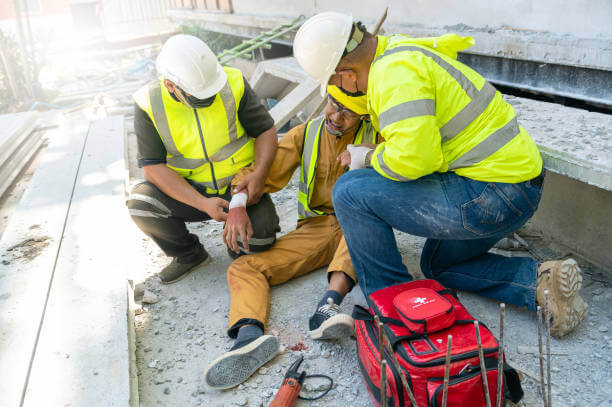Health and safety is a paramount concern within any business. Not only is it a legal requirement that businesses take every reasonable measure possible to protect their staff, but proper health and safety can also improve morale, productivity and quality of work. Granted, some lines of work are riskier than others – there are more hazards on a construction site as opposed to in an office – but this does not mean an employer can get complacent.
Below, we have listed the most common workplace injuries with advice on what you can do to minimise any present risks.
Muscle and Back Injuries
Back injuries are a frighteningly common occurrence in the workplace, by virtue of the workplace activities and risks that can bring them about. Workshops and construction sites are awash with heavy loads in the form of tools, equipment and materials, the incorrect movement of which can lead to muscle strain and back injury. Even office environments can cause back injuries, from the incorrect lifting of stationery to poor posture when working.
The chief way in which back injuries can be avoided is by comprehensively training staff on-site how to safely lift heavy loads – and not to lift especially heavy loads without a buddy. In construction sites and workshops, lifting injuries can be minimised by the use of trollies for heavy raw materials, and a tool chest on wheels for the delivery of heavy toolsets and power tools.
Falls from Height
Falling from height is a thankfully uncommon occurrence in the average administrative environment, but is a serious risk in construction, and especially larger industrial environments; falls from height are the third-highest cause of fatal injury in the food industry, being responsible for 20% of accidental deaths.
With prevention the best kind of health and safety measure, avoiding working from a height where possible is the best way to reduce the risk of injury. Where avoiding working from height is impossible, other precautions must be taken – such as the appointment of an assistant when using a ladder to ‘foot’ the ladder.
Falling Objects
Working at height also poses another health and safety risk to other workers, being dropped or falling objects from height. The risks associated with items being dropped are naturally increased, whether material, a tool or even a pen – which could go on to injure a worker at ground level.
In many cases, a hard hat is not sufficient protection from a falling object and should be considered a last resort for protection from falling objects. Instead, objects should be prevented from falling at every opportunity; tool lanyards can ensure equipment remains tethered to a person or structure, while wide platforms can prevent materials from slipping off.
Poor Quality Equipment
Lastly, as previously mentioned personal protective equipment – or PPE – is often considered a last resort when it comes to workplace health and safety. However, it can be necessary for protection in a variety of tasks, and injurious if not up to code. All PPE must be reviewed and replaced on a regular basis, and in buying new PPE an employer should endeavour to check that it is CE certified. 








